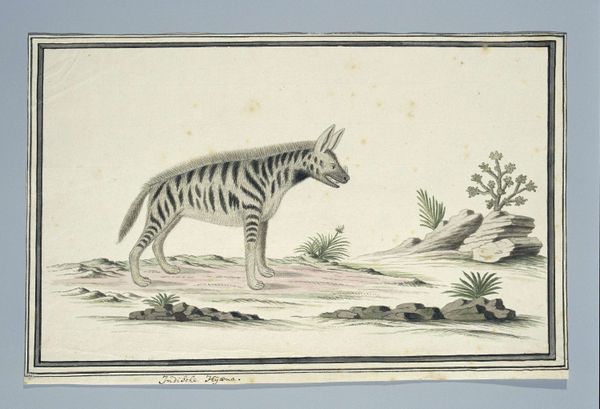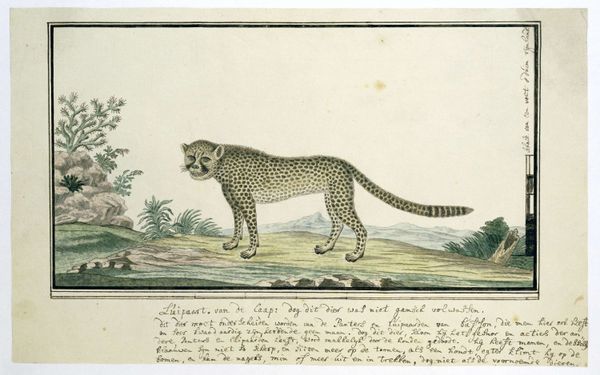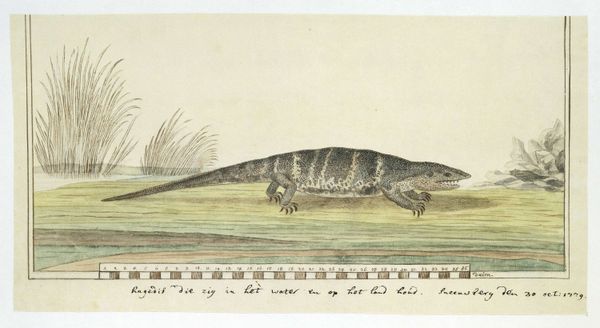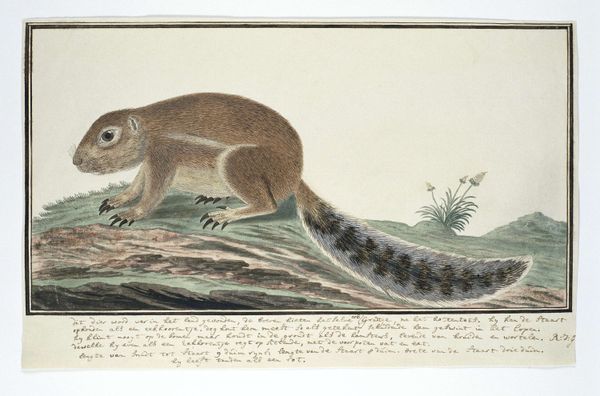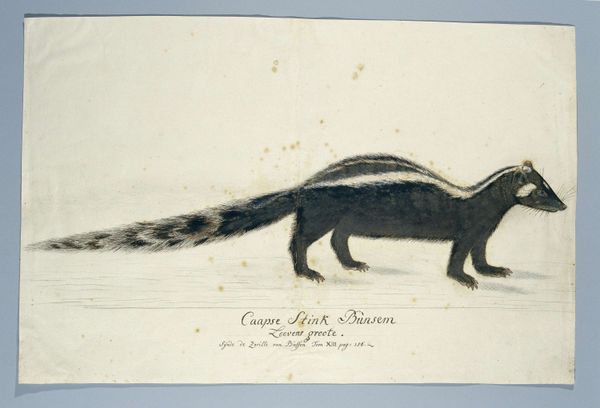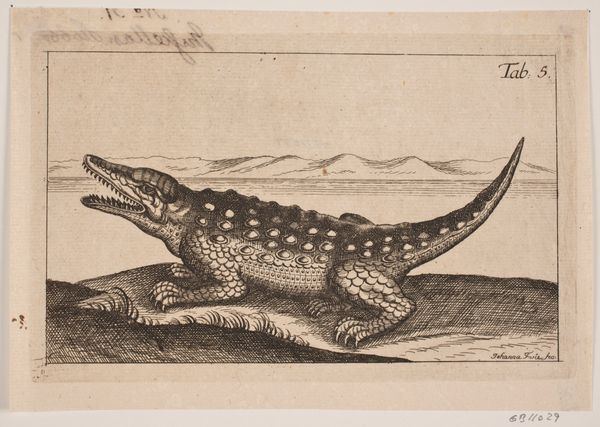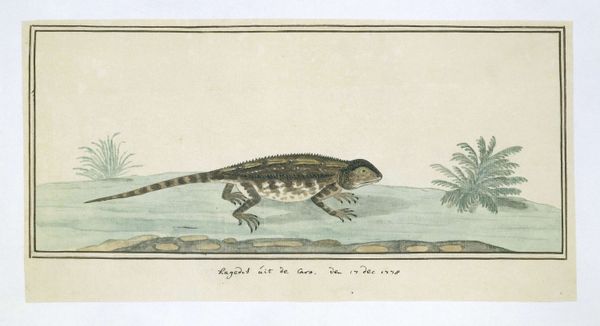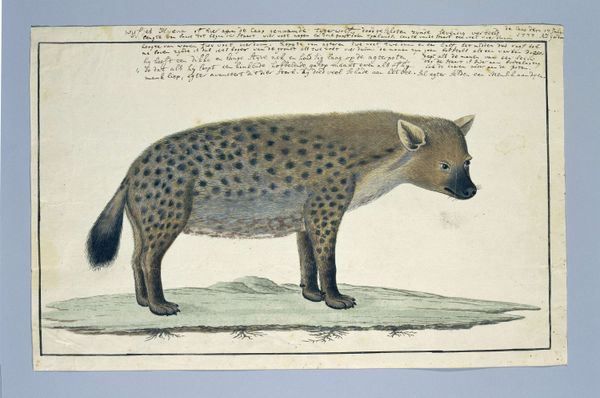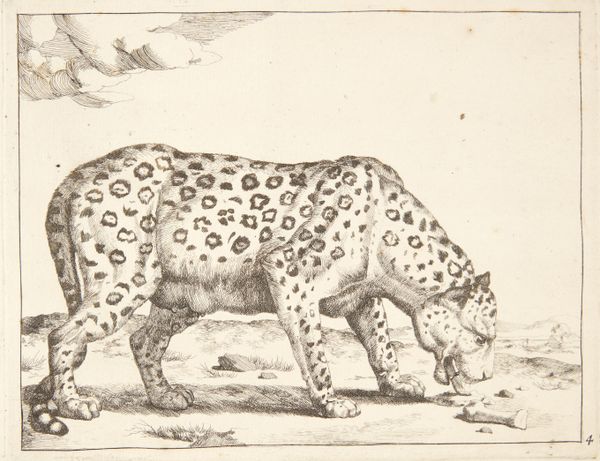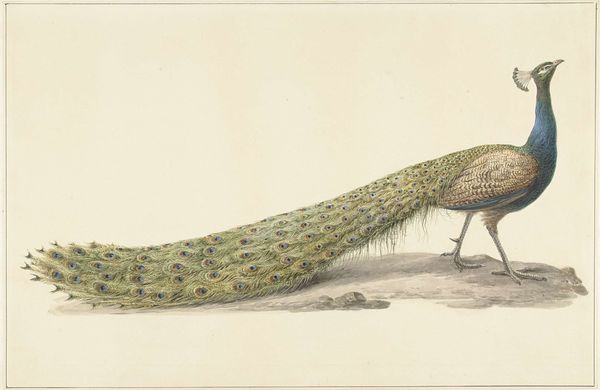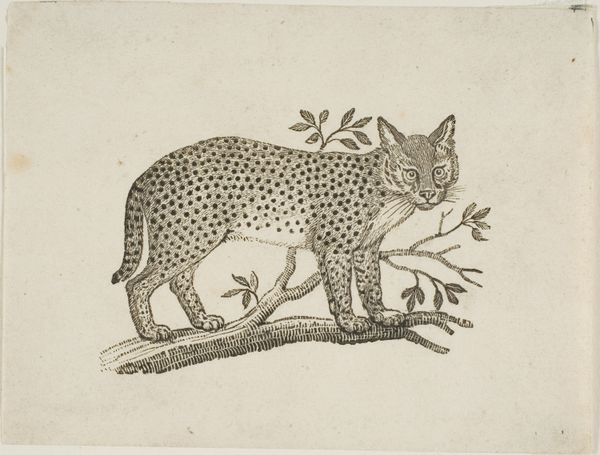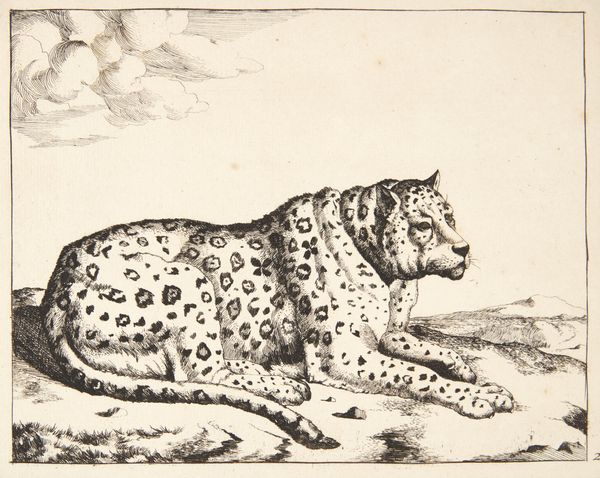
drawing, plein-air, watercolor, ink
#
portrait
#
drawing
#
animal
#
plein-air
#
watercolor
#
ink
#
coloured pencil
#
watercolour illustration
#
history-painting
#
naturalism
#
watercolor
#
realism
Dimensions: height 660 mm, width 480 mm, height 316 mm, width 473 mm, height mm, width mm
Copyright: Rijks Museum: Open Domain
Robert Jacob Gordon, a Dutch explorer and military officer, made this watercolor drawing of a Cape genet. Gordon's work gives us insights into the complex interactions between European colonists and the African environment. As an explorer, Gordon straddled two worlds. On the one hand, he documented the natural world with a scientific eye; on the other, his work served the colonial project, mapping and claiming territory. His depiction of the genet, while seemingly objective, reflects the power dynamics of the era, transforming the animal into a specimen of colonial interest. Consider the act of naming. Assigning European names to local flora and fauna was an assertion of dominance, a way of imposing a European understanding onto the African landscape. The inclusion of a scale bar in the drawing further emphasizes this impulse to measure, quantify, and ultimately control the natural world. The drawing invites us to reflect on the intertwined histories of colonialism, science, and representation. What does it mean to see nature through a colonial lens?
Comments
No comments
Be the first to comment and join the conversation on the ultimate creative platform.

